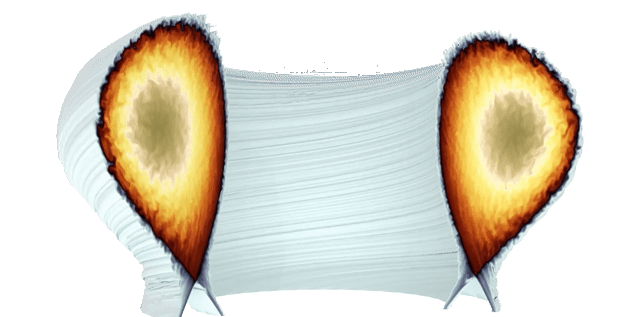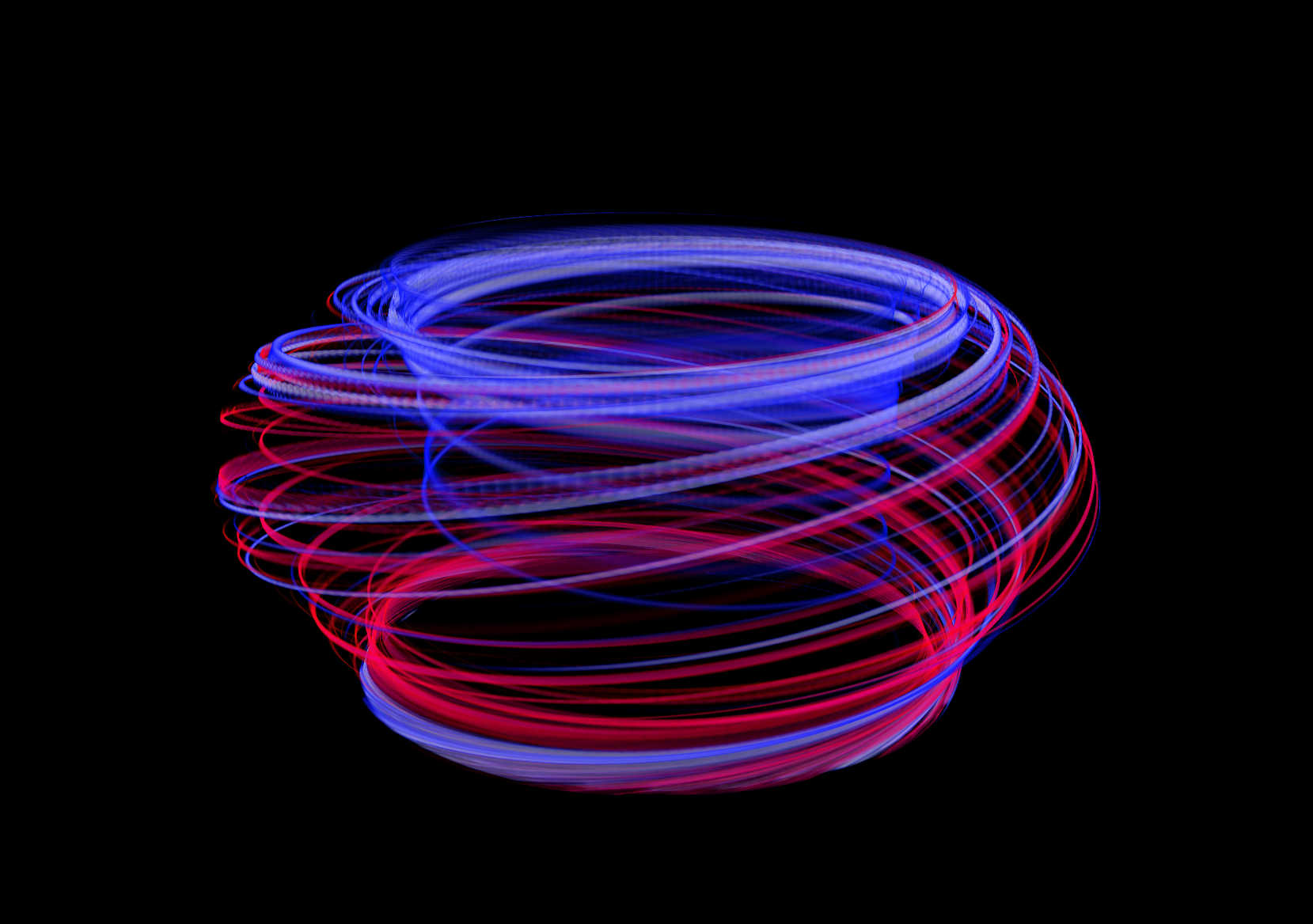Showroom
Visual impressions from simulations run with FELTOR.
A production run for COMPASS

Turbulent density fluctuations in COMPASS. The simulation is from 2023 and ran for 10 days on 16 NVidia V100 GPUs on the EUROfusion High-Performance Computer (Marconi-Fusion). Turbulence is a major contribution to particle and energy loss in a tokamak Wiesenberger and Held (2024).
The first COMPASS simulation



Click to enlarge. These are impressions from a three-dimensional simulation of tokamak turbulence from 2019. This simulation ran on 16 NVidia GPUs on the EUROfusion High-Performance Computer (Marconi-Fusion) and represents the COMPASS tokamak (about 1m in diameter).



Click to enlarge. From the same simulation, we have two-dimensional visualizations of perpendicular and parallel scale lengths of turbulent fluctuations.
2D turbulence simulation
A two-dimensional turbulence simulation. Two-dimensional simulations are computationally a lot cheaper than 3d ones but have limited validity with regards to effects of the magnetic field geometry.
2D blob simulations
Density fluctuations (or blobs) in the tokamak scrape-off layer are thought to carry density and energy out of the confined region towards the machine wall.